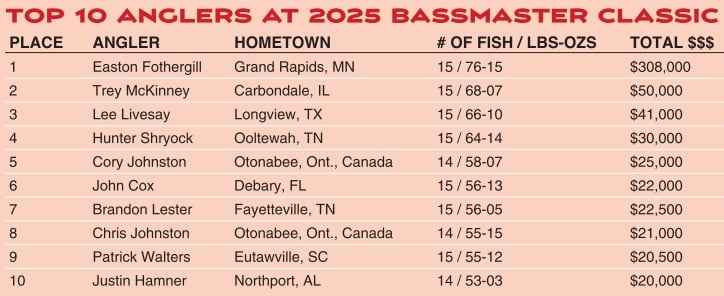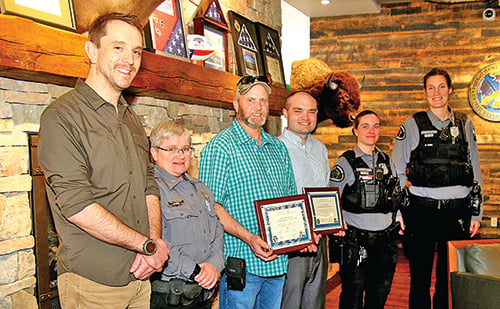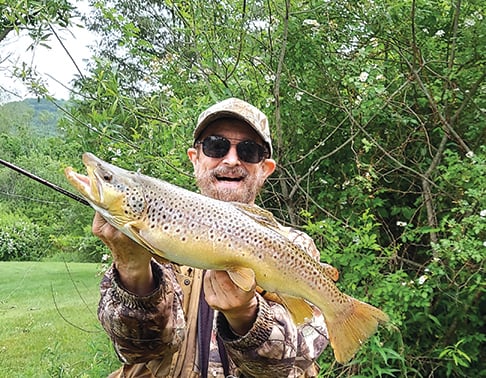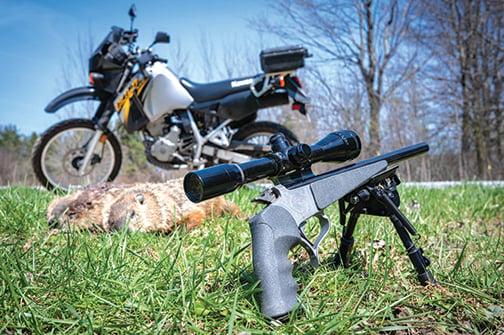Here’s how Minnesota’s Easton Fothergill won on bass fishing’s biggest stage – Outdoor News
Outdoor News may earn revenue from products shown on this page by participating in affiliate programs. Click here to learn more.
Bass tournaments often are determined by who lands big bass and who loses them.
That is precisely how the 2025 Bass Pro Shops Bassmaster Classic presented by Under Armour was determined in late March on Lake Ray Roberts north of Ft. Worth, Texas.
Minnesota’s Easton Fothergill landed an 8-pound, 1-ounce largemouth in the last two hours of the tournament while Illinois’ Trey McKinney lost a 7-pounder late in the day.
That was the difference, as the 22-year-old Fothergill won the $300,000 first-place prize and broke a long-standing Bassmaster Classic record in the process. He earned another $8,000 in contingent money.
The 20-year-old McKinney, the youngest angler in the Classic, came up 8 pounds, 8 ounces shy. If he’d landed his big fish and Fothergill lost his, he would have become the youngest to ever win bass fishing’s most coveted title. He still walked away with $50,000.
Fothergill finished with 76 pounds, 15 ounces, while McKinney had 68-7. Local angler and pre-tournament favorite Lee Livesay was third with 66-10, Hunter Shryock fourth with 64-14, and Canadian Cory Johnston fifth with 58-7.
That winning weight erased Kevin VanDam’s Classic record of 69-11 set in 2011 on the Louisiana Delta.
McKinney, who was the only angler to weigh in 26-pound-plus limits two of the three days, led the first day. However, he stumbled terribly (15-13) on Day Two, which gave Fothergill – who had 29-6 that day – the lead heading into the finals.
MORE BASS COVERAGE FROM OUTDOOR NEWS:
Jigs and swimbaits are a simple but effective approach for spring bass
How a plan to catch a record fish came together in 1982 on Minnesota’s Pomme de Terre River
Throwback weedless spoons are great for bass in early spring
McKinney recovered with 26-1, the biggest bag in the finals, while Fothergill struggled. The Minnesotan had only four fish with a little over an hour and half to go before catching the 8-pounder to clinch the victory.
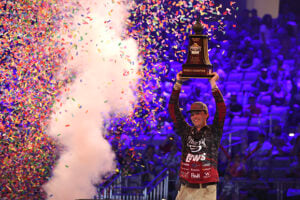
But even that big fish didn’t come easy. Fothergill made a late-day move to a morning spot where he hadn’t caught a fish. Utilizing his forward-facing sonar, he spotted a big bass hovering in a flooded cedar tree.
His first four casts with a lightweight wacky worm were blown errantly into the limbs by gusting winds.
“Rather than go in and get them unsnagged, I broke them off to avoid spooking that fish,” he recalls. “I knew the caliber of her and it was going to take the perfect cast. I wasn’t going near that tree.”
The fifth cast landed where he wanted it and slowly fell just outside the base of the tree. He watched on his sonar as the big bass swam out, looked at the worm, and turned back toward the tree.
“She seemed totally uninterested in my worm, and then all of a sudden she flips around, rifles toward my bait, and ignites on it,” he said. “It was totally crazy.”
While most of the field targeted the pre-spawn bass with power-fishing techniques such as bladed jigs, big swimbaits, and flipped jigs into grass patches and flooded timber, Fothergill opted for a finesse tactic.
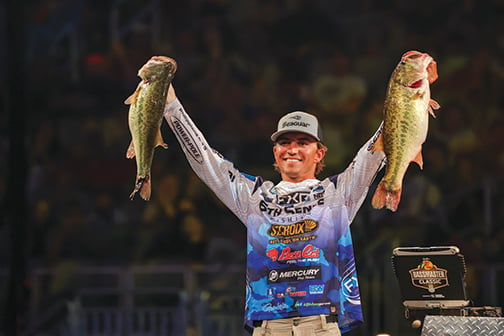
He fished a Neko-rigged Strike King Finesse worm to catch 80% of his fish. He placed either a 1⁄32- or 3⁄32-ounce nail weight into the nose of the red bug-colored worm to allow it to fall slowly and attract bites from the finicky bass.
He surmised that the bigger bass were holding in larger cedar trees in slightly deeper water outside of spawning flats. The bass would stage there before making the move shallower. Water temperatures hovered in the low to mid-50s, although temps inched upward as the tournament progressed.
He weighted the worm based on the wind strength and how bass were positioned around the trees.
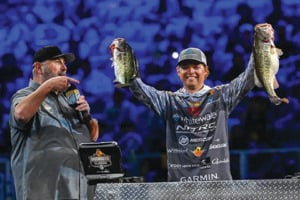
“If I saw the fish (on his electronics) suspended up in the water column, I chose a lighter weight,” he said. “If they were closer to the bottom, I went a little heavier. A big key was to allow the worm to land softly on the water and not spook the fish. Some were less than two feet below the surface.”
He fished the worm on Lew’s Elite Series spinning rod and a Custom Lite reel spooled with 8-pound Strike King Tour Grade Braid with a 2-foot-long, 17-pound Seaguar Gold Label fluorocarbon leader.
McKinney was fishing similar type structure although he did a lot of running from place to place. Early in the tournament, he keyed on timber farther out and along drains feeding the pockets on the east arm of Ray Roberts.
He was trying to intercept fresh fish filtering toward the backs of pockets where a lot of anglers were fishing. That worked early, but as the water warmed, the fish moved, and he had to relocate.
He fished unnamed finesse jigs into the thick portion of the trees, but when he saw bass sitting away from the tree, he used a 6th Sense Provoke jerkbait or a Neko-rigged 6th Sense Bamboosa worm.
Other Great Lakes region anglers who competed in the Classic were Jay Przekurat, Plover, Wis., 13th; Conner Jacob, Peoria, Ill., 19th; Pat Schlapper, Eleva, Wis., 36th; Alex Redwine, Blue Ash, Ohio, 39th; Kyle Patrick, Cooperstown, N.Y., 43rd; and Kyle Norsetter, Cottage Grove, Wis., 54th.

